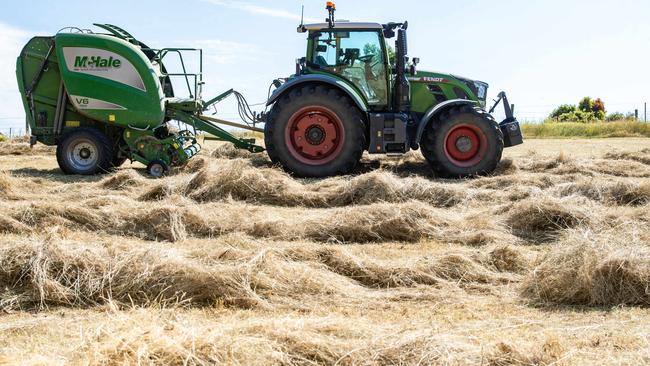South eastern Australia hay, silage prices surge due to drought
Fodder prices are rising across Australia — but some regions are faring worse than others. We break down the prices.
Deteriorating confidence in seasonal conditions and a flurry of buying activity before winter has increased fodder prices by up to $30 a tonne.
The Australian Fodder Industry Association hay report cites the prolonged drought conditions in central South Australia for much of the demand and the real cost increase ex farm was closer to $20 to $50 a tonne.
On-farm cereal hay prices are at a peak of $380 a tonne.

FodderLink inspections and product development manager Joel Kennedy of southern NSW said prices had really ramped up in the last couple of weeks.
He said $30 to $50 a tonne increases was a conservative estimate in the overall pricing structure.
“South Australia is driving demand, and the fact it has been dry in some of the key growing areas of Victoria where hay is made is having a bearing,” he said.
“It is really crystal ball kind of stuff, we don’t know how much higher it is going to go,” he said.
In Central West NSW the AFIA report indicates lucerne has increased $25 a tonne with values ranging from $450 to $550 a tonne. Also in the Central West the pasture hay price has increased $5 a tonne to $270 to $320 a tonne.
In the Goulburn Murray Valley cereal hay increased $10 a tonne, ranging from $290 to $330 a tonne and lucerne was quoted at $20 a tonne dearer selling from $390 to $470 a tonne.

In southwest Victoria, where it remains dry, lucerne hay was up $20 a tonne to make $380 to $460 a tonne, and pasture hay increased $5 a tonne, selling from $260 to $300 a tonne.
Nanneella fodder producer and AFIA vice chairman Jason Palmer said he wasn’t disappointed to see lucerne prices increase.
He has lucerne stored on farm and said prices were only just getting to where they needed to be.
Australian Dairy Farmers president Ben Bennett said input costs meant many primary producers were going backwards, rather than breaking even this season.
“You’ve got a rock-bottom price paid for milk and input costs are ever rising,” he said.
“Hay and silage are some of the biggest on-farm costs now that electricity and fertiliser, while still high, aren’t rocketing up in price like a couple of years ago.”




